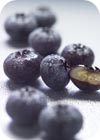
Hitting media in full force come this January is a new consumer produce campaign-Fruits & Veggies-More Matters-that’s reinforcing what consumers already know: eat more fruits and vegetables. The new produce campaign replaces the 5 A Day for Better Health program, which will have been completely phased out by December 31.
Both fruits and vegetables can be formulated into dairy foods; however if the goal is to deliver the nutrition of a serving of produce in a single-serving of dairy, fruit ingredients, in their many forms (concentrates, pieces, purees, etc.) tend to be easiest to work with. Further, dairy processors are learning that consumers are attracted to fruit blends, particularly when an exotic fruit is blended with a mainstream fruit. The exotic fruit provides the dairy food with a new dimension, with the unexpected twist of flavors imparting a unique, unforgettable sensory experience that keeps consumers coming back for more.
Just think back to your first strawberry-kiwi experience. Strawberry, the mainstream fruit, functioned as a base flavor-the familiar. Kiwi came on as the new, the unknown, and provided a sense of adventure.

According to research presented by FONA International, Geneva, Ill., in its winter 2008 newsletter, there are 15 noteworthy flavor blends in North American beverages with all but one (chocolate) being a fruit. Keeping in mind that flavor trends typically start in beverage and carry over to other categories, it might be worthwhile exploring the following blends in dairy food applications.
Top-15 Flavors in Blends
1. Lemon & Lime
2. Kiwi & Strawberry
3. Peach & Mango
4. Blueberry & Pomegranate
5. Raspberry & Lemonade
6. Orange & Mango
7. Cranberry & Raspberry
8. Blueberry & Acai
9. Mango & Passionfruit
10. Pomegranate & Blackberry
11. Pomegranate & Acai
12. Chocolate & Raspberry
13. Strawberry & Acai
14. Berry & Pomegranate
15. Tangerine & Lime

Further, formulators need to understand that balance is less about usage levels and more about flavor strengths. For example, acai has a strong, woody flavor and is best enjoyed at lower concentrations. Thus, in a blueberry-acai blend, blueberry should dominate.
Fruits categorized as berries are identified most often on the top-15 list. Pomegranate is second, followed by acai, with the latter being the newest exotic fruit to enter the food and beverage scene.
Many fruits, in particular those in the berry family (not my relatives, but I wish), are increasingly viewed as having a profound impact on health and wellness.
In August 2006, Norwegian and U.S. scientists studied the antioxidant levels of more than 1,100 common foods and found that of the top-10 foods, five were berries. Blackberries, strawberries, cranberries, raspberries and blueberries outranked other fruits and vegetables by such large margins that there was no contest. Berries are the clear winner when it comes to antioxidant levels.
In the last several years, research into the health benefits of berries, as a food group, has skyrocketed. Dozens of studies are published every month suggesting how berries may aid humans in fighting the onset of cancers, heart and circulatory disease, age-related mental decline and obesity. While each of these studies may focus on individual berries, eating a variety of berries-in other words, blending berries-offers the best chance of getting a full compliment of important nutrients and dietary components necessary for optimal health.
This summer, seven North American berry organizations are joining together to present a conference featuring the latest research by scientists worldwide on berries and human health. The International Berry Health Benefits Symposium, to be held in Monterey, Calif., June 22 to 23, will showcase presentations on these nutritional powerhouses. The symposium will bring researchers together to share their work with their peers, the public, media representatives, health professionals and representatives of the food industry.
For more information, visitwww.berryhealth.com
